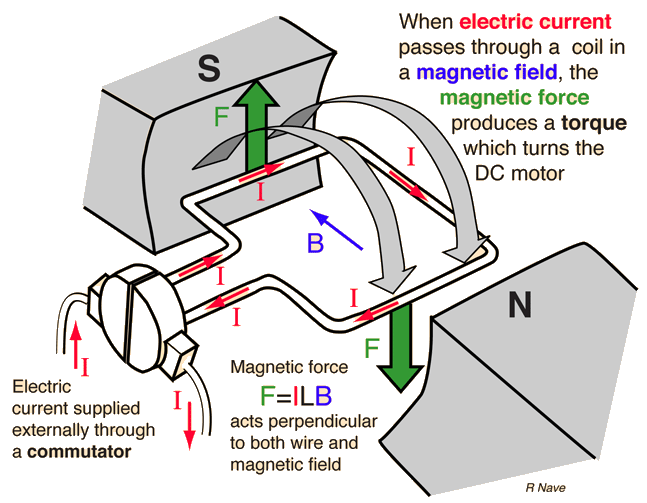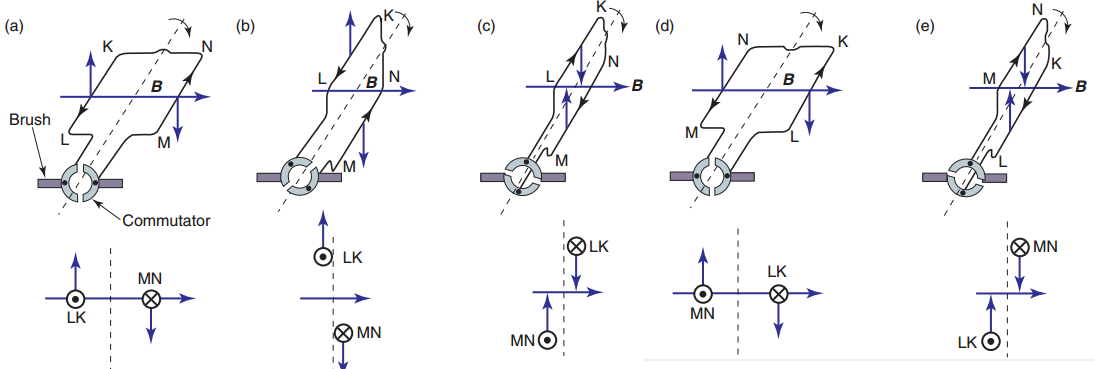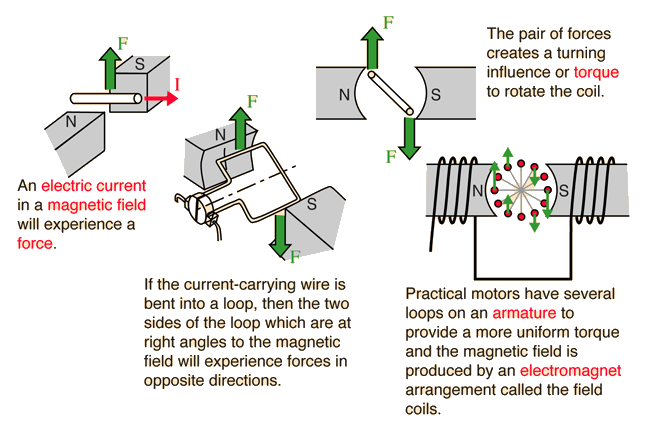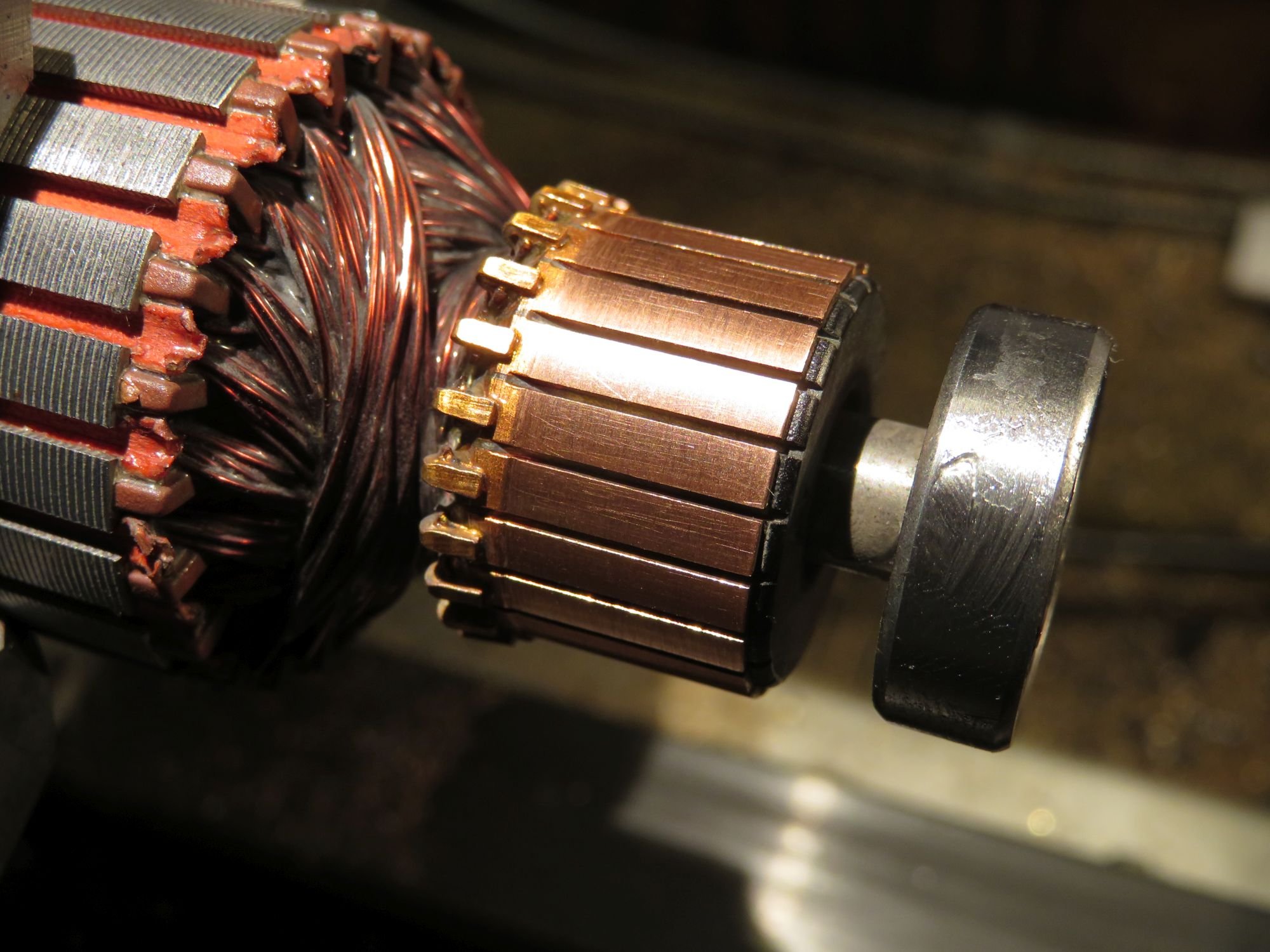Electric Motors (DC)
The real purpose of this discussion is to develop mental models for how we discuss and explore the physics of currents flowing in rotating coils within magnetic fields. Just figuring out how to sketch such things is a challenge in it's own right. Here are several images that are typical of those used to discuss DC electric motors.
Image 1:

Image 2:

Image 3:

Like many text book presentations they are designed to tell you the answer rather than help you learn how to figure out the answer. (stop whining Bruce!) Here's what we are going to do:
Image 1: Activity:
Use our magnetic force rule to verify the forces shown on each leg of the square coil. Mostly RHR practice. Why is there no force shown on side across from the location where the current is supplied? Do you agree that these forces will make the coil turn as indicated?
Image 2: Activity:
The first of these 4 settings is the same as image 1 except that the B field points the other direction. Because we expect the coil to turn AND we know that magnetic forces are 'tricksy' things (to quote Gollum) it seems prudent to consider the forces on the coil in different orientations. Now verify the forces shown in part (b) of this large image. What is your interpretation of your analysis?
Image 2 (c): Activity:
Assume that the current continues in the same direction as the coil reaches the orientation shown in (c). What does this actually mean? Notice the currents shown in (c) are reversed from the previous frame. The commutator is what causes this. In examining this portion of the sketch can you articulate a reason why we would want to reverse the flow of current through the coil?
At this point, hopefully, you can see how a DC motor generates a torque that keeps the coil rotating in the same direction. Without the commutator to reverse the current the coil would just waggle back and forth and not rotate. Did you also notice that the magnitude of the torque (rotational force) varies from a maximum to a minimum as the coil rotates to different orientations? For this reason motors usually contain a number of coils with different orientations to keep the overall torque more constant. Each coil needs it's own commutator. The following image will give you a sense of this.

Image 3: Activity:
Our previous analyses assumed that the magnetic field was the result of magnets near the coil. We know from the Biot-Savart Law that we can create magnetic fields using currents. In many motors coils are used to create the external magnetic field in which the coil turns. Can you determine which way the current flows in each coil?
What questions do you have about how DC motors work conceptually?
AC motors are similar but different because the current cycles forward and back without a commutator.
